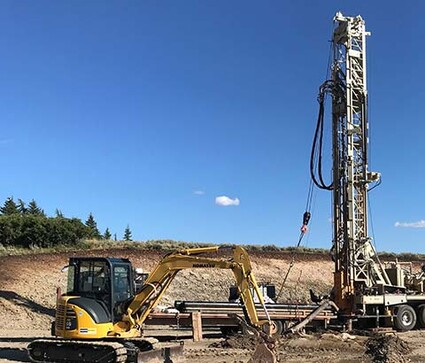Will the well run dry in Sisters?
Last updated 8/11/2021 at Noon

Bill Bartlett
Well drillers are busy — but mostly with new wells and routine repair and replacement. So far, Sisters Country has not seen the severe drop in well water experienced in other parts of Oregon.
Some property owners have reported that their water wells had run dry. Fortunately, those cases are sparse. The larger issue remains water curtailment for farmers, especially hay producers, who are facing uncertainty that they will have enough water for a second cutting.
The second cutting is the difference between profit and loss. Worries are mounting particularly in the north county.
Canvasing four well drillers and pump service outfits leads to the conclusion that the vast bulk of their calls remain repair or replacement of pumps — typical jobs for this time of the year. There are few calls to deepen wells.
New wells, however, are in high demand commensurate with countywide population growth and property subdividing. When 40 acres are developed as eight five-acre tracts, that’s seven new wells. The backlog is generally four to five months with a cost of $3,000 to $10,000. Cost is not determined by depth nor by having to drill deeper as a result of the drought. It’s determined by what the driller has to drill through to reach the 320-foot-deep (on average) water table.
While the depth to reach water has grown five to six feet this summer, this is not a reason to panic, drillers tell The Nugget. Abbas Drilling in Terrebonne say that conservation is the key to managing growers’ water, so much of which is wasted to seepage and evaporation.
Some 90 percent of the streamflow from the Deschutes River is diverted through irrigation canals during the growing season between April through October.
“The diversions cause a dramatic reduction of streamflow — more than 1,500 cubic feet per second (cfs) in the Middle Deschutes, the stretch between Bend and Lake Billy Chinook,” according to the Deschutes County watermaster in Bend.
The porous, volcanic soil characteristics of our high desert terrain allow nearly half of the water diverted from the river to canals to seep into the ground before it reaches the farm.
“As a result, irrigation districts need to divert twice the amount of water as they need to serve their patrons — an extremely inefficient and antiquated system,” claims the Deschutes River Conservancy.
The Three Sisters Irrigation District canals have been piped at considerable effort over several years to prevent loss.
There are eight irrigation districts serving customers from the Deschutes River.
“Low streamflow leads to habitat degradation, water quality problems, and unhealthy habitat for fish and wildlife,” the Conservancy states.
The City of Sisters is in no danger of running out of water anytime soon. While that is reassuring, every drop saved is worth considering. In the broader Sisters Country water is not taken for granted. Pump servicers remind well owners to be alert for failure, especially since many wells in the area are at least 40 years old.
The long-term forecast remains very hot and very dry.












Reader Comments(0)